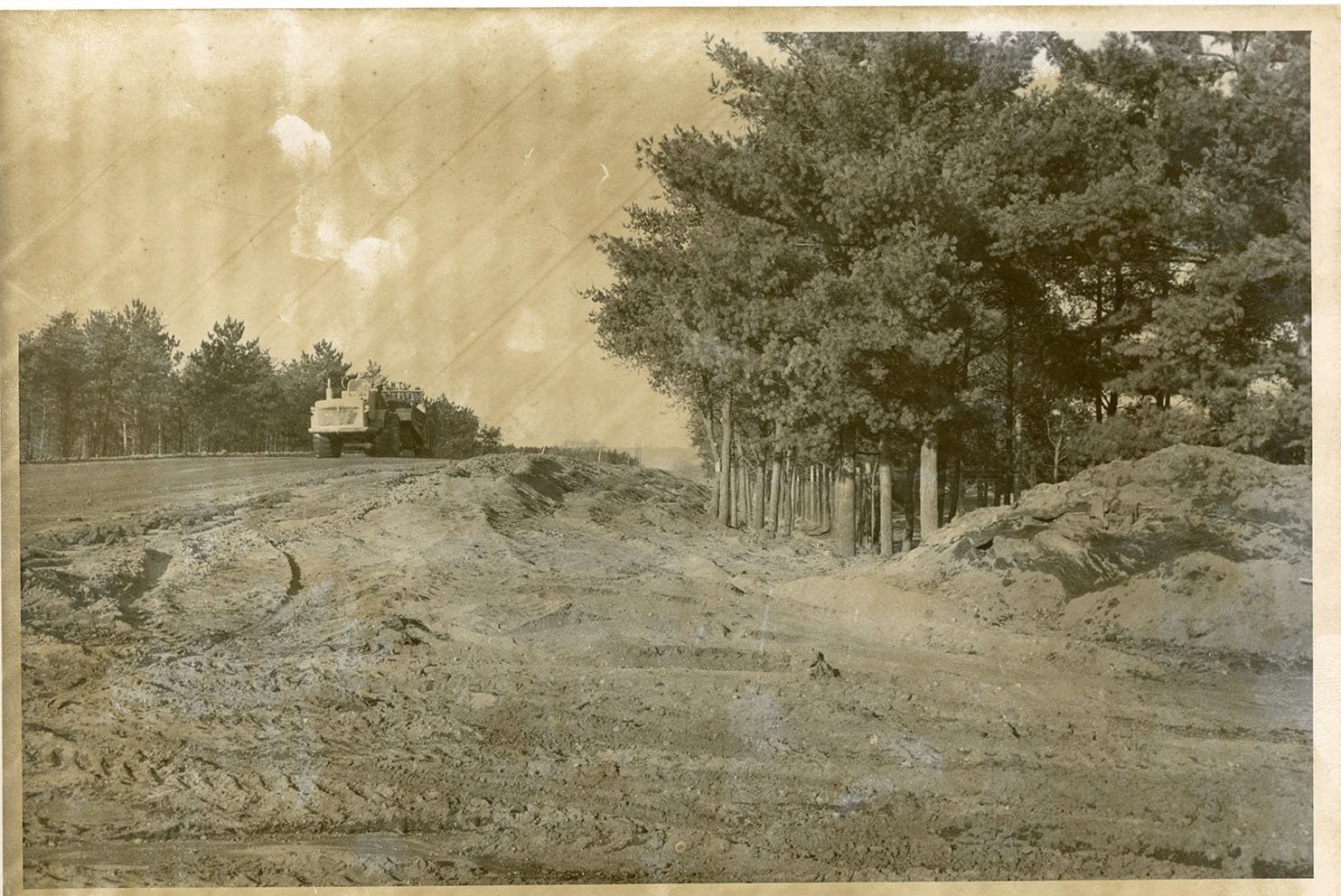City of Winona’s Prairie Island Park
Part 3: Stories of the Land - Inviting the Public In (1915-1960)
The Formation of Public Spaces
Prairie Island has long been looked to as a space for the citizens of Winona to escape the City, paddle a boat for a picnic, go fishing and hunting, camp overnight, play baseball, grow food, and more. Officially inviting the greater Winona community to recreate in the river bottoms, however, can be rooted in John A. Latsch’s 1915 vision for an “Island Park Preserve'', to be crafted from the river lands he acquired from the town Homer to Minneiska, the nucleus of which was Prairie Island (PI). In 1917, the Boy Scouts gathered at PI to grow vegetables alongside the John A. Latsch Memorial Board tree nursery. The Girl Scouts joined the camp in 1923. The greater scope of these dreams were tamped down, however, in the 1930’s by the following: the completion of the Lock & Dam system and resultant flooding of 3,000 acres of bottomlands purchased by Latsch; the persistence of flooding in the springtime; and the danger of prairie fires in the dry summers.
Cerca 1933 construction of Lock & Dam 5A before the flooding of pool 5A. Looking south from Wisconsin, notice the forested island just beyond the dam and Black Bird Slough.
Photo courtesy of WInona County Historical Society archives.
Cropped and rotated aerial photo of Lock & Dam 5A during the 1951 flood. South is up. Note how the island upstream (right) from the dam is now under water and the spillway is overflowing. The levee built around the residential area of PI after the ‘65 flood is not yet in place. Notice what land is above, and under, water, namely the residential area of Prairie Island. Also, notice the thick pine plantations of Prairie Island Park.
Photo courtesy of WInona County Historical Society archives.
In 1922, with the support of the passionate conservation mindset of Will Dilg, a successful Chicago businessman who fell in love with fishing for bass in the river around Winona, the Izaak Walton League (IWL, or the Ike’s), a national organization committed to conservation, was formed. The motivating cause at the time was to protect the upper Mississippi River’s natural features of wetlands, sloughs, and channels, by averting a plan to construct a system of levees and drain critical wetlands, turning them into farmland. The result would have transformed the river into a giant ditch. Dilg understood in a deep way how the wetlands functioned as habitat, supporting the life cycles of a vast diversity in fish and wildlife populations. His and others’ efforts led to the establishment of the US Fish & Wildlife Service in 1924. The Winona Chapter of the Ike’s was named in his honor after his passing in 1927, acknowledging that much of his inspiration came from mooring his boathouse around Winona and fishing for bass. Inspiring folks to become members meant getting people connected with the outdoors in the ways that Will Dilg was.
In 1937, the Will Dilg Chapter of the Ike’s constructed a rustic log cabin in the City of Winona’s Aghaming Park as a meeting place (WDR). The cabin, located directly across the river from Bay State Milling, was accessed by the John A. Latsch Wagon Bridge. During gatherings, the Ike’s hosted skeet shooting, training waterfowl retrieving dogs, turkey hunting, cooking meals of wild game, and more. In 1937, over 1,000 people attended an organized turkey shoot in the area around the new cabin.
At the same time, the Winona City Council was discussing the possibility of developing Prairie Island as a park and picnic area. By 1935, Prairie Island had developed as an informal destination for camping, hunting and fishing for Winona residents for over 60 years. In 1938, the dike road was built to protect the municipal airport from flooding. With improved road access to the island, and thickening stands of 10-20’ pine trees planted 10-years prior, the public desire for more recreation development and maintenance of the forested area was growing.
Aghaming Park experienced frequent spring flooding, making the road to the Ike’s cabin difficult to pass. In 1940, a state dog trial competition was so popular, the event had to be moved to the more spacious and accessible field at Prairie Island. By 1948, the Winona Chapter of the Ike’s decided to move their cabin across the river to Prairie Island, on the site of the former Boy Scout Camp. An agreement to use the land was granted to the Ike’s by the John A. Latsch Memorial Board after some consideration. In 1950, the City of Winona built 2-reservable picnic shelters. By 1953, the park became immensely popular. The City of Winona’s Park and Recreation Department reported that the new shelters had hosted over 25,000 guests that summer.
The Will Dilg Winona Chapter of the Izaak Walton League cabin after relocation to Prairie Island in 1948.
Photo courtesy of Barry Drazkowski, President of Izaak Walton League: Will Dilg Winona Chapter.
Early 1950’s improvements to Prairie Island included thinning the overgrown pine tree nurseries and upgrading the levee road.
Photo courtesy of WInona County Historical Society archives.
Balancing public access with responsible land stewardship
With Prairie Island Park’s increased accessibility and popularity came challenges. The upriver land near the spillway, leased to the City of Winona by the Army Corps of Engineers for recreational use, became a dumping ground for refuse. The Corps ordered the City to clear the site of trash. In 1950, the heavy use led to vandalism of park benches and structures. As a result, caretakers and law enforcement officers were assigned to protect the park. In 1952, the Ike’s cabin was enlarged to house a property caretaker as protection against vandalism (WDR). By 1953, the Latsch Memorial Board enacted a list of 10 rules for governing the Prairie Island Park which addresses the following issues: excessive consumption of alcohol, vandalism, discharge of firearms, containing campfires, dumping of refuse, permitted concessions, motor vehicle operation and parking, and scheduling group events. The Board also deputized a caretaker so they could issue citations for not following those rules.
The Winona Daily News reported how the Ike’s purchased pheasant for $3.10 and released them at Prairie Island for hunting in the fall of 1960. While the birds took to the grassland habitat, their establishment was challenged by off leash dogs, random discharge of firearms, and uncontrolled and raging prairie fires. The emerging pattern here is that Prairie Island Park is a wildly natural place, yet hospitable enough to attract the hearts and imaginations of many. While there has been a presence of individuals and organizations centered on management, use and conservation of the resources of Prairie Island, there has never been a complete vision or guide in how to welcome the community while responsibly developing and maintaining the critical wildlife habitat within.
Sources:
Winona Republican Herald, articles 1915 - 1954
WInona Daily News, articles 1954 - 1960
Winona County Historical Society photo archive
Izaak Walton League, Will Dilg Winona Chapter




